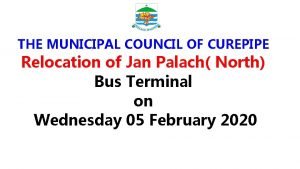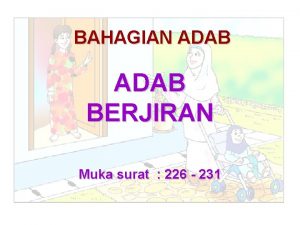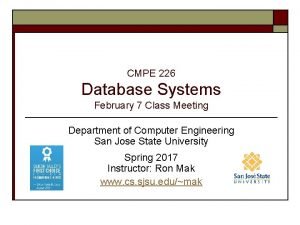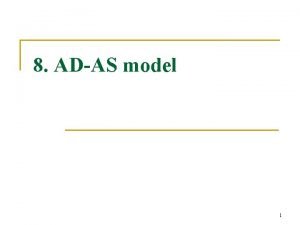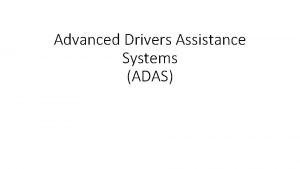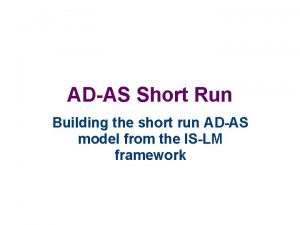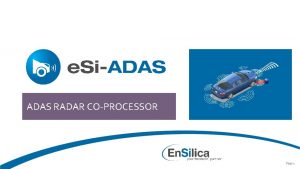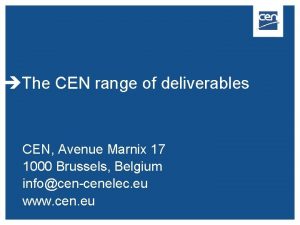CEN TC 226 Road Equipment and ADAS Advanced








- Slides: 8

CEN TC 226 Road Equipment and ADAS (Advanced Driver Assistance Systems) SVMF 09. mars 2017 Trond Cato Johansen 1

DRIVING AUTOMATION SYSTEMS LEVEL (JAE Standard J 3016) AD NO MORE DRIVER AD ADAS Driverless ENJOY FREE TIME Robot Taxi 2 No Driver Assistance System Longitudinal OR Lateral driving control possible Level 0 Driver Only Level 1 Assisted Longitudinal AND Lateral driving control possible Level 2 Partially Automated Driver will respond if a request to intervene Level 3 Conditionally Automated Par délégation d'AFNOR / On behalf of AFNOR Nom du Bureau de Normalisation Driver not required during defined use case Level 4 Highly Automated Level 5 Fully Automated

INVOLVED STAKEHOLDERS Ø CAR MANUFACTURERS / RESEARCH INSTITUTES / ROAD ADMINISTRATION / INFRASTRUCTURE MANAGEMENT CIE MAIN ASSESSMENT ●The word « Interaction » is more relevant than « adaptation » in order to qualify vehicles and infrastructure relationship ●The pace of performance increase for AD system is significantly higher than the infrastructure investment cycle. ●Problems are quite different depending on the level of driving automation system (according to JAE J 3016 standard). u ADAS (level 1 & level 2) • Recognition of road markings (H&V) : availbility reliability • Service availability depending on road assets quality • Heteregoneity of vehicles sensor and system performance • No request from sensor suppliers and car manufacturers about the minimum caracteristics of road markings & • • u 3 signs Road marking & signs specification are only defined for new features. Maintenance and reliability evaluation is under infrastructure manager evaluation. Communication V 2 X in urban area for driver information (e. g. « GLOSA » ). AUTONOMOUS DRIVING (level 3 to 5) : Communication V 2 X is key for safety / comfort / availability • Some use-case keeps technically « unsolved » such as road work area detection or toll gate management. Par délégation d'AFNOR / On behalf of AFNOR Nom du Bureau de Normalisation

● On the other hand, a lot of road equipement are already communicating (Io. T), without interaction with vehicles. ● Data sharing about safety events, traffic conditions, road quality … could be provided out of any commercial activity ( « common good » ). ● Administration budget constraint, business model, return on investement are to be taken in consideration. MAIN RELEVANT STANDARDIZATION TOPICS ● Communication between Vehicle and Infrastructure u State of play (feedback from current projects such as Scoop towards ITS standarization activity) u Interoperability for standard messages (communication profiles) ● Communication infrastructure and data sharing vehicle – infrastructure u Based on non profit principle OPEN ISSUE ● Road marking & signs recognition (in connection with assistance functions availability) u Need for better understanding of the recognition mechanisms / technology anticipation / Environmental conditions 4 Par délégation d'AFNOR / On behalf of AFNOR Nom du Bureau de Normalisation

Många viktiga organisationer är involverade 5

Europeisk policy för H & V vägmarkering 6

Från mötesantäckningarna Känd problematik 7

Vägen vidare i CEN TC 226 4 work items 8
